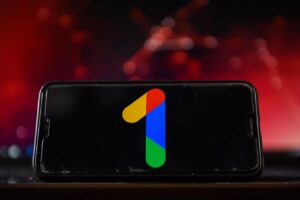The Most Advanced AI Models: Their Functions and How to Utilize Them

A Look at the Latest AI Models
Artificial Intelligence (AI) technologies are evolving rapidly, with new models emerging at a breakneck pace. Major tech companies like Google and innovative startups such as OpenAI and Anthropic are constantly developing cutting-edge AI systems. With so many options available, it’s easy to feel overwhelmed when trying to understand the differences and applications of these models.
The Challenge of AI Model Metrics
AI models are often marketed based on technical benchmarks, but these metrics don’t necessarily reflect their real-world application or effectiveness. Understanding how businesses and individuals use these tools can be more important than the raw numbers.
To help navigate the expanding AI landscape, we’ve compiled an overview of some of the most advanced AI models released in 2024 and 2025. This list will be continuously updated to reflect new launches and advancements.
Overview of Notable AI Models from 2025
Google Gemini 2.5
Gemini 2.5 is recognized for its reasoning capabilities, particularly in web application development and coding tasks. However, it faced challenges on specific coding benchmarks compared to alternatives like Claude Sonnet 3.7. Access to this model requires a monthly subscription of $20 for the Gemini Advanced plan.
ChatGPT-4o Image Generator
OpenAI’s enhanced GPT-4o now includes image generation features, allowing it to create visuals in the style of Studio Ghibli anime. Although this upgrade is exciting, it raises copyright concerns. The model is available through the ChatGPT Plus subscription, costing at least $20 each month.
Stability AI’s Stable Virtual Camera
Stability AI has introduced a model capable of creating 3D scenes and camera angles from two-dimensional images. However, it still struggles when dealing with complex subjects such as humans or flowing water. This tool is accessible for non-commercial research through HuggingFace.
Cohere’s Aya Vision
Cohere’s Aya Vision is a multimodal model designed for captioning images and answering related questions. It is especially proficient in languages other than English. Users can access this model for free via WhatsApp.
OpenAI’s Orion (GPT 4.5)
Orion is heralded by OpenAI as its largest model, boasting strong emotional intelligence and vast world knowledge. Nevertheless, it may not outperform newer reasoning models on certain benchmarks. It is available on a premium plan costing $200 per month.
Other Emerging Models
Claude Sonnet 3.7
Anthropic’s Claude Sonnet 3.7 is marketed as the first hybrid reasoning model, capable of generating quick responses while also allowing for deeper, thoughtful answers. Users can control the model’s thinking time, with accessibility arrangements requiring a $20 monthly subscription for heavier usage.
xAI’s Grok 3
Developed by Elon Musk’s xAI, Grok 3 claims superior performance in math, science, and coding tasks. The model is accessible through an X Premium subscription, which costs $50 each month.
OpenAI’s o3-mini
This smaller model is optimized for STEM tasks like math, coding, and science, making it a cost-effective alternative to larger models. It is available for free, although heavy users may require a subscription.
AI Models from 2024
DeepSeek R1
Originating from China, DeepSeek R1 is well-regarded for coding and math tasks. Being open-source, users can run it locally at no cost, but it does face challenges related to censorship due to government oversight.
Meta’s Llama 3.3 70B
Meta’s latest iteration of the Llama AI models is celebrated for its efficiency and cost-effectiveness, particularly in math and guidance. It is freely available as an open-source model.
OpenAI Sora
Sora is notable for creating realistic video content from text descriptions, although it does have issues with accurate physics. Currently, it can be accessed only through the paid ChatGPT tiers, starting at $20 monthly.
Emerging Capabilities and Features
Many of these models showcase new capabilities and integrations that enhance user experience. For example:
Research Assistance: Google’s Gemini Deep Research provides summarized search results in a coherent document format, ideal for students and researchers—although its quality may not match peer-reviewed articles.
- Coding and Automation: Models like Claude’s Computer Use are designed to automate tasks, from coding to making travel bookings, although many remain in beta stages.
The variety of AI models available showcases the innovative progress being made in the field of artificial intelligence. Each model presents unique features, pricing structures, and strengths, ensuring that there’s an option to meet diverse user needs and preferences.



